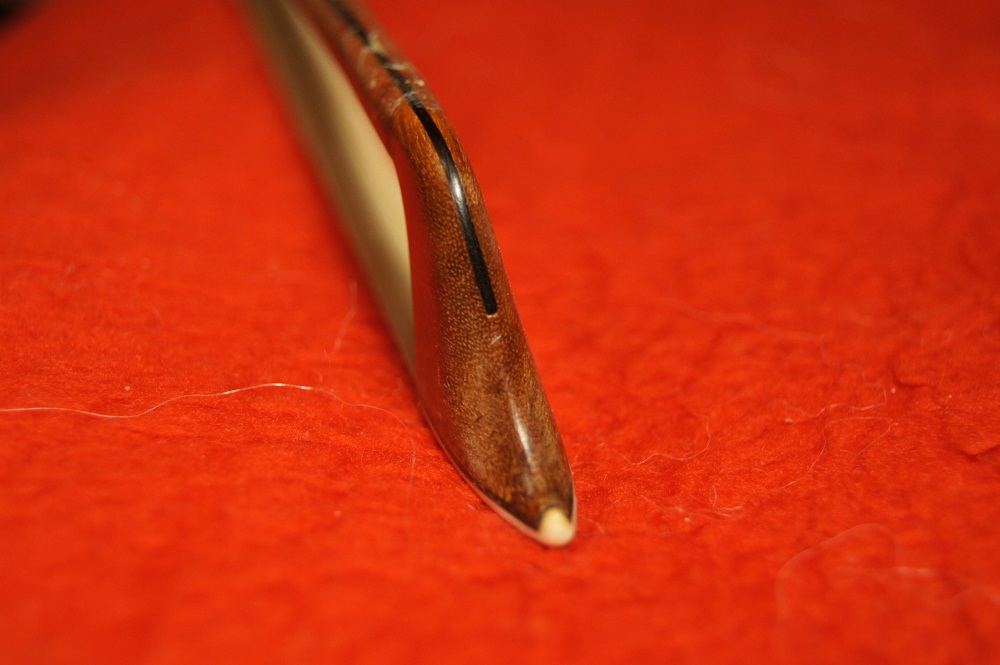
It's a hole/crack combination that had previously been patched with a misshapen crumb of wood and now daylight was showing through into the mortise of the stick. The cracks were still short but compounding in diverse directions. The mortise was unnecessarily deep so this area is very thin.
I cleared my procedure on maestronet and got their stamp of approval. Ya'll, a few of the folks on the Pegbox can be intimidating, but most of them are so helpful and kind when you ask even a silly beginner question. There are a lot of respected professionals there who are willing to be so generous with their knowledge. Not to mention, just perusing the old threads is an education!
Working from the mortise, I dab in wood glue/sawdust into the hole/crack as filler, then insert a few slivers of CA-glue-covered wood into the mortise, squishing the filler out through the cracks, to be the new mortise floor. Then I re-carve out the cavity to the depth required by the frog.
For patch wood I'm using shards from another bow.
After the first stuff dried, extra filler had to be applied, since wood glue shrinks as it dries. I crumbled up the crumb of wood which was matching dark tropical wood, probably original, to make a filler that matches.
No original wood was removed and it now has structural integrity. I polished the whole thing with linseed oil and pumice. Apparently the powder sticks in the holes and such and makes it shinier. It looks gorgeous now.
I think this was originally a rather nice bow. The fittings aren't silver, but the abalone in the frog is just lovely. It's even in the end of the screw. Can't wait to hair it and try it out!


















